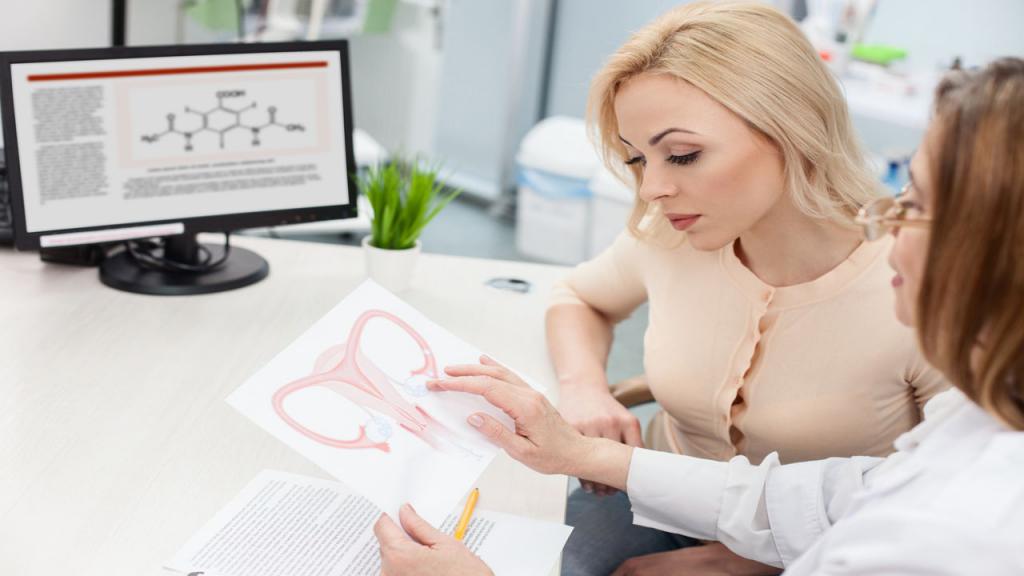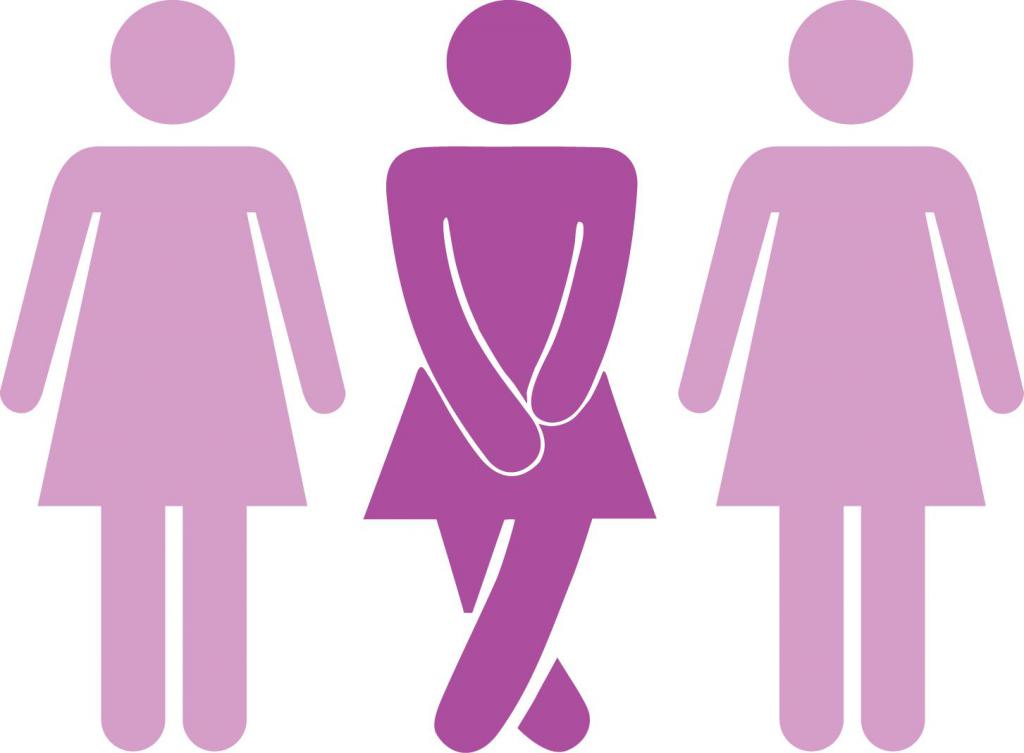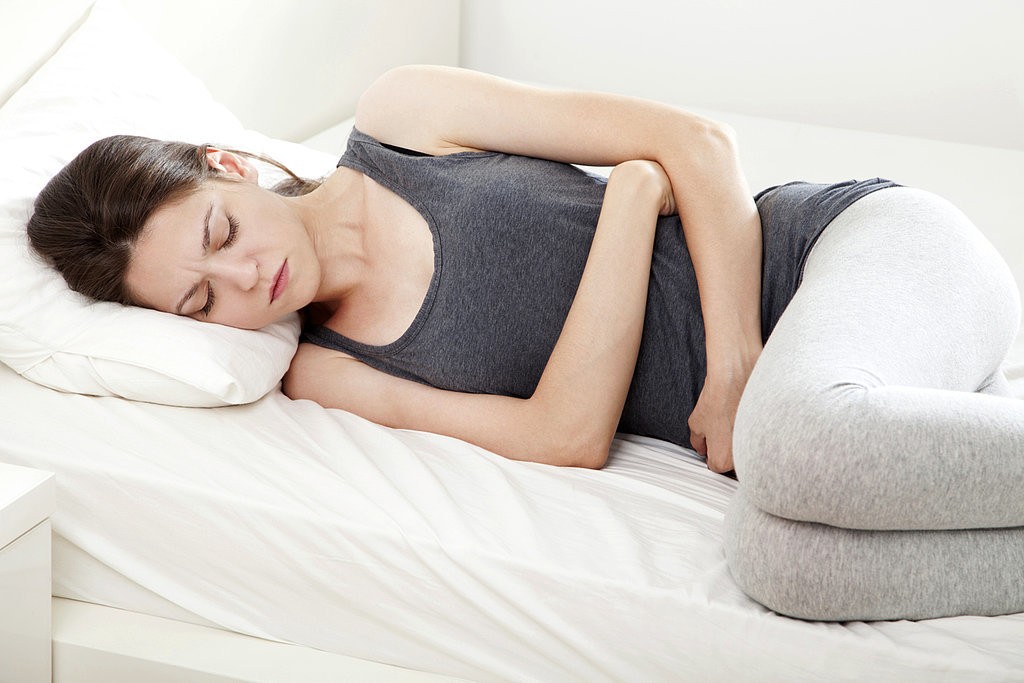Urination (synonym: deurination) of a person is an arbitrary emptying of the bladder into the external environment through the corresponding channel (urethra). Any violation of this process is called dysuria. There is no exact figure for the number of urinations, after which we can talk about its increased frequency.
The average number of toilet trips per day for an adult is five to nine during the day and no more than one episode at night. At a time, an adult should release 200 to 300 ml of fluid. Night urination is called nocturia.
Rapid urination exceeds 10 trips to the toilet per day. If an increase in the volume of secretions is also noted, this symptom is called polyuria. With frequent urination, a single amount of urine is less. By the way, this symptom can be harmless, and hide serious pathologies.
The symptoms and treatment of cystitis in women, drugs used in therapy, and many other issues will be discussed below.
General urine formation

The renal pelvis system, which is a filter for the body, is engaged in the production of urine. Regulation of the process occurs under the control of the central nervous system. 180 liters are produced per day of primary urine. It contains not only water, but also salts, sugars, a special acid, and with pathologies - protein and other substances. But in the external environment a person secretes only about one and a half liters of urine, which is already secondary.
What it is? This is urine obtained after primary reabsorption. In this process, many substances are absorbed back into the blood.
What determines the amount of urine excreted? It is directly related to age, nutrition, gender, climate and the general condition of the body.
Causes of frequent urination in women
The following reasons are distinguished:
- Physiological - are the norm. With them, the symptoms of a certain disease in the form of temperature, pain, itching, burning, pain and other things are absent.
- Pathological - associated with a variety of ailments of the body.
Only 15% of these manifestations are associated with diseases of the renal system, the rest can be triggered by cardiac, endocrine, STIs (sexual), gynecological and other pathologies.
Frequent urination without pain: causes

In many cases, a constant or frequent urge to empty the bladder in women is not a pathology:
- The cause of frequent (without pain) urination in women may be taking diuretics for different purposes. At the same time, the number of secretions and their volume increase.
- Pregnancy is the most common physiological cause of frequent (without pain) urination in women. It is due to the growth of the uterus and its pressure on the urethra and bladder. Moreover, in this case, night urination is characteristic. But the reason is not only that. A change in the hormonal background in a pregnant woman leads to an increase in the volume of circulating blood to create a better nutrition for the fetus. This, in turn, additionally burdens the renal system. In addition, amniotic fluid should be renewed every two to three hours. All together cannot but affect the diuresis of a woman.
- Nutrition features - various spices, pickles, fats contribute to the increase in fluid secretion. All of them irritate the internal receptors of the bladder on the mucosa.
- Abuse of caffeinated drinks - green tea, alcohol, especially beer. A lot of coffee produces copious urine. This is not felt when drinking a soluble drink. But if you switch to coffee from fresh beans, you will immediately feel the difference.
- Hypothermia of the legs. In this case, frequent trips to the toilet are a normal reaction of the bladder.
- Psycho-emotional turmoil. With stress, tissue hypoxia occurs, the result is frequent urination.
- Menstruation. A few days before its appearance, fluid begins to linger in the body (the body is preparing for a potential pregnancy), and with the advent of menstruation it begins to be excreted intensively.
- Climax An increase in the frequency and constant urge to urinate in a woman at this age is associated with a restructuring of the hormonal background. Estrogens come to naught, and much depended on them in due time. Before menopause, they maintained the tone of the uterus and vagina, normal sensitivity of the mucous receptors in the urethra and bladder, and contributed to their good blood supply. Now this is not happening. Metabolism slows down. Urination not only becomes more frequent, but also disturbs during sleep. At least two trips to the toilet at night is the norm for menopause. Additionally, at this age, urinary incontinence is often associated.
Pathological causes of frequent urination in women
A certain pathology becomes one of the most common causes of constant urination in women. Usually it is infectious and inflammatory, and in women occurs much more often - three times - compared with men. The culprit is the anatomy of the MPS - the female urethra is shorter and wider, and the pathogen can easily enter the urinary tract.

Cystitis
Inflammation of the bladder mucosa. With this pathology, pains in the lower abdomen and in the region of the bladder itself are characteristic. Going to the toilet occurs with cramping, burning and frequent. A woman has constant urge to urinate due to the fact that there is no feeling of complete emptying with cystitis. Often, incontinence joins, and the discharge can become cloudy due to pus and protein, which indicates complications.
Painful and frequent urination in women, accompanied by a burning sensation and pain, is one of the early manifestations of cystitis. The general condition is not violated, the temperature is within normal limits or rises slightly - up to 37.5 ° C.
Antibacterial drugs are always prescribed for the treatment of cystitis. In addition, therapy begins with heavy drinking. Useful decoctions of cranberries and lingonberries.
Not only antibiotics are used, but also antispasmodics, physiotherapy, herbal medicine, analgesics. It helps UHF, iontophoresis, inductothermy.
Urethritis
So called most often infectious inflammation of the urethral mucosa. Painful and frequent urination in women is the most common complaint. It is supplemented at the initial stage by malaise, burning and itching in the urethra. General symptoms of intoxication are uncharacteristic. The insidiousness of urethritis is that without treatment it does not pass, so therapy is necessary.
Getting rid of pathology in women consists of several stages.
- Elimination of infection, antibiotics are used for this.
- The next phase is the normalization of vaginal microflora.
- In any case, an increase in immunity.
Urolithiasis disease
Painful urge to urinate in women, often with pain and blood, is very characteristic for the ICD. This is because stones often damage the mucous membrane of the excretory tract. Also, the urine stream can be interrupted, the bladder does not completely empty; pains above the pubis are noted, with a return to the inner surface of the thigh and perineum.
The localization of stones can be different, and the frequency of urination can speak of their localization in the bladder. Usually this manifests itself when running, shaking riding - then a woman suddenly has a sharp desire to urinate.
To begin treatment of the ICD, the type of calculi, their size and localization are pre-established. The type of stones suggests a different diet. If necessary, surgical measures are prescribed. They can be in the form of endoscopic or cystoscopic crushing of stones. Frequent and abdominal surgery.
Pyelonephritis
Infectious lesion of the renal tubule system. It is acute and chronic. Consider the features below.
The constant urge to urinate in women with pyelonephritis usually becomes a symptom of a chronic form. In addition, it is supplemented by dull lumbar aching in nature, aggravated in cold or damp weather.
The progression of pathology with damage to two kidneys leads to the development of arterial hypertension. In the acute form, the temperature rises rapidly to 39–40 ° , the patient complains of weakness and chills, nausea and even vomiting.
Pain in the lower back increases, urine may become cloudy as a result of an increase in white blood cells - a purulent process. Treatment should be supervised by a physician. The course of antibacterial therapy is long, combined with herbal medicine, antispasmodics. At the end of the acute period, spa treatment is desirable.
Bladder atony
The name suggests a weakening of the tone of the walls of the bubble. The main symptom is the frequent, painless urge to urinate in women with a small amount of excreted fluid.
This pathology is often congenital, so the only way to solve the problem will be special exercises and taking medications to strengthen the muscle wall of the bladder. Atony is characterized by a sharp urge to urinate in women who are urgent.
Overactive Bladder (OAB)
Usually this condition becomes a consequence of other pathologies. In this case, spontaneous contraction of the muscles of the bladder occurs, caused by increased activity of the receptors. One of the links in the chain fails: "bubble - pathways - brain."
Deurination is frequent and occurs at any time of the day. Often it is accompanied by urinary incontinence. Treatment will be aimed at normalizing the increased excitability of the central nervous system: muscle relaxants, botulinum toxin, sedatives.
False urination

False urges to urinate in women are those situations where there is a desire to empty oneself, but there is no discharge of fluid or there is a scanty amount of it.
They can provoke them:
- the presence of calculi in the kidneys or bladder;
- persistent constipation;
- the systematic use of alcohol in large quantities;
- constant stress or anxiety;
- cystitis.
Female genital diseases
Fibromyoma - there may be no symptoms or at the initial stage there are only irregularities of the menstrual cycle, pain in the lower abdomen, metrorrhagia. With the growth of this benign tumor, it compresses the excretory paths, which leads to an increase in urges.
Treatment of frequent urination in women in this case depends entirely on the elimination of the tumor. The treatment is hormonal or surgical.
Uterine prolapse. It arises as a result of a weakening of the ligamentous apparatus supporting the organ; weakening of the pelvic muscles and fascia. In this case, the bottom and neck fall below their normal anatomical and physiological boundaries. This also displaces the bladder. Patients suffer from meno- and metrorrhagia, pulling pains in the lower abdomen, sensations of a foreign body in the vagina, incontinence and increased urgency. If not treated, the uterus drops even lower, and a rectal displacement is added.
Medications for frequent urination in women are selected according to the degree of illness, taking into account the concomitant gynecological pathologies and the age of the patient.
As a conservative treatment, strengthening the muscles of the abs and pelvic floor (gymnastics, gynecological massage, HRT) is used. Heavy physical labor is excluded. The radical method is surgery.
Endocrine pathology
Diabetes mellitus - glucose is always connected to water molecules, so frequent urination occurs. Moreover, this is one of the first symptoms, especially at night.
In addition, there are additional polydipsia and polyuria - thirst and a large amount of diuresis (up to three liters). Of the other symptoms - itching of the skin, vulvitis on this soil, a decrease in the regenerative abilities of tissues (long unhealed scratches and wounds).
Diabetes insipidus - this disease is characterized by severe polydipsia and diuresis of up to five liters. With pathology, the urge to urinate in women is constant. As a result of dehydration, patients lose weight, weakness, nausea appear; the skin becomes dry.
The disease is associated with impaired function of the hypothalamic-pituitary system, when vasopressin levels drop in the blood. Treatment of diabetes insipidus is carried out using HRT, which becomes life-long.
Cardiovascular diseases
The urge to urinate in women at night is often associated with CVD. They appear due to the fact that during the day in the body tissues due to a decrease in the pumping function of the heart, fluid accumulates - swelling. At night in a horizontal position of a person, it begins to be actively displayed.
Painful frequent urination in women: causes
Frequent urination in women with pain can be caused not only by inflammation of the MPS, but also by infections such as STIs - gonorrhea, chlamydia, trichomoniasis. The symptom arises because the urinary apparatus is closely connected with the genital area.
If women appear to urinate with burning, the cause is not only cystitis, but also STIs. The premise of such dysuria can also appear in the improper use of hygienic tampons, which irritate the vaginal mucosa.
Rapid urination can occur immediately after sex, due to irritation of the walls of the vagina, but it is transient in nature.
Diagnostics

For diagnosis, various methods are used. These include:
- MRI of the brain;
- urethrography
- measurement of excretory function of the kidneys;
- bacterial tests of urine and blood;
- UAC and OAM;
- biochemistry of blood and urine;
But the main thing is ultrasound.
Treatment

Now consider what treatment (drugs) is used for symptoms of cystitis in women:
- penicillins that do not break down due to the presence of flormuleclavulanic acid;
- fluoroquinolones (ciprofloxacin);
- cephalosporins (cefuroxime, ceftriaxone);
- nitrofurans (nitroxoline, nevigramone).
Uroantiseptics - "Furadonin", "Furazolidone", "Uronefron", "Kanefron", "Urolesan".
Pre- and probiotics - are needed to normalize the microflora of the MPS. Most often, they use Lactobacterin, Acipol, Linex, Enterol and others.
Antispasmodics - indicated for IBD, because there is irritation of the mucosa with salts and stones, as a result of which there is a spasm. Assign "Drotaverin", "Spazmalgon", "No-shpu" and others. Popular Mirabegon. Drugs take at least three months.
Phytopreparations - contain plants with antispasmodic, anti-inflammatory effects. These agents also contribute to the dissolution and elimination of certain salts (centaury, horsetail, rosemary, lovage, dog rose and others). Most often used "Fitolizin", "Cyston", "Urolesan".
Tactics for non-urinary dysuria
With uterine myoma, conservative treatment is ineffective, therefore, only removal by surgery is required.
In diseases of the cardiovascular system in order to drive away swelling, on the contrary, they achieve an increase in urination. For this, diuretics are used. Then the bcc decreases, swelling decreases. The more often going to the toilet - the more effective the treatment. With a decrease in edema, diuretics either cancel or reduce the dose.
Urinary Incontinence Treatment
For him, medications are prescribed that enhance the work of the sphincters and muscles. Most often prescribed Midodrin - alpha-adrenergic agonist. The action is based on increasing the tone of the sympathetic nervous system, due to which the sphincter is strengthened.
Duloxetine - Suppresses serotonin reuptake. The latter begins to increase in the brain structures and the frequency of urination decreases. Treatment is carried out under the supervision of a physician, because the drug can cause withdrawal symptoms.
More often than others are assigned:
- Driptan
- "Detruzitol";
- Spazmeks;
- Tovias.
Prevention

Prevention of the described pathologists should be comprehensive:
- Do not postpone urination when the urge appears from the bladder. This is very harmful in all respects - the walls of the organ are irritated. Urine contributes to the deposition of stones, the appearance of a tumor, overstretching, etc.
- Before going to bed, drinking plenty of fluids is undesirable.
- During urination, make sure that the bladder is completely empty.
- Do not abuse coffee, tea and soda.
- Follow the water-drinking regimen - drink at least 2 liters of water per day.
- Wearable underwear should be made from natural fabrics.
- When bathing, do not get carried away with bath foam.
- Shower should be a daily routine.
- Without indications, diuretics and herbal preparations should not be taken.
It is also necessary to eat right, give up bad habits and use clothing according to the weather to exclude hypothermia.